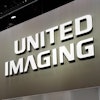Monday, November 27 | 3:20 p.m.-3:30 p.m. | SSE08-03 | Room E352
Ultrasound shear-wave elastography (SWE), MR elastography (MRE), and transient elastography are all effective methods for diagnosing advanced fibrosis in patients with nonalcoholic fatty liver disease, according to researchers from the University of Pittsburgh.Dr. Alessandro Furlan and colleagues included 35 patients in the study, all of whom had biopsy-proven nonalcoholic fatty liver disease (NAFLD). The patients underwent ultrasound shear-wave elastography, MR elastography, and transient elastography on the same day; the median time interval from liver biopsy was 72 days.
The researchers compared imaging results with histologic data and each patient's NAFLD activity score, which ranges from 0 to 8 and includes measures for liver steatosis, lobular inflammation, and ballooning. Furlan's group then evaluated the performance of each type of imaging exam using receiver operating characteristic (ROC) analysis.
The area under the ROC curve was 0.85 for ultrasound shear-wave elastography, 0.95 for MR elastography, and 0.94 for transient elastography -- demonstrating that physicians have a number of effective tools in their arsenal when it comes to diagnosing fibrosis in patients with fatty liver disease, the group wrote.
"Ultrasound and MR-based elastography methods are highly accurate for the detection of advanced fibrosis in patients with NAFLD," Furlan and colleagues concluded.




















